

At the Offshore Well Intervention Middle East 2022 conference, representatives from BP provided a detailed case study on their successful rigless abandonment of a well in Block 61, Oman.
Aala Abbas, Wells C, I & I Engineer at BP, opened the session by explaining the background of the operation. She noted that the well was drilled back in 2016, targeting the Amin formation and appraising the northern concession of Block 61. The formation is of tight gas which required hydraulic fracturing to produce, and the well was intervened post D&C immediately where the targeted zone was perforated and break down was attempted. This, however, was unsuccessful and, after attempts were made to re-stimulate in addition to extensive testing, the decision was finally made to permanently abandon the well as part of the oil and gas ministry requirement.
“Conventionally, wells P&A jobs are performed via a drilling rig which is very efficient, has a low-risk profile, is fairly straightforward but costly,” Abbas commented. “Hence, we looked into different methodologies and benchmarked them against the rig option which was projected to take 11 days and a cost of one [given as a comparative figure].”
“The second methodology was a hybrid option where the rig and rigless would be used. It would entail killing the well via coiled tubing before setting a plug and cementing the wellbore via a rig. The P&A job was expected to take approximately 12 days of operation at a cost of 1.23. This is quite high but would save rig time.”
“The other option, and the one we selected, was P&A completely through rigless. The well would be killed via coiled tubing before the setting of the plug and perforation above it would be conducted via E-line. It would then be cemented in the wellbore via the cement unit. The total duration of this methodology was approximately 22 days, and the planned cost was 0.73 with zero rig time. There were, however, disadvantages in it being non-standard, relatively higher risk profile and it was the least experienced method.”
The rigless operation, once selected, was divided into four main stages. The first was to isolate the reservoir by pumping cement via coiled tubing covering approximately 530 metres from the well TD to above the pay zone. BP then tagged the cement to confirm its placement and quality via coiled tubing and, post tag, they displaced the well back to one SG before inflow testing the plug and pressure that up to 8,000 psi.
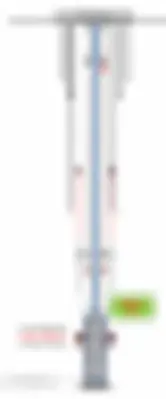
The next stage included setting a copperhead bridge plug across the packer to isolate the shallowest reservoir section and then pressure tested to 7,000 psi. Initially they ran with tubing punch but this was unsuccessful and so they ran with 2-7/8” perforating guns, perforating just above the packer to allow reverse circulation later for the cement job. The injection test was successful with a circulation rate of six barrels per minute.
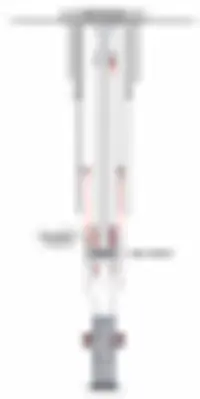
Continuing the presentation, Sultan Al Abri, Wells C, I & I Engineer at BP, commented, “For the third stage we had to confirm that we had sufficient circulation of cement through the perforation and so, to stimulate that, we pumped a high viscous pill which confirmed the circulation and capability to receive cement through the perforations. After that, we reversed circulated the cement from the A-annulus up the tubing while applying positive pressure on the tubing to avoid having cement free-falling from the annulus. The cement was then given time to cure before running slickline tag to confirm the cement placement and the quality of the cement which was successful.
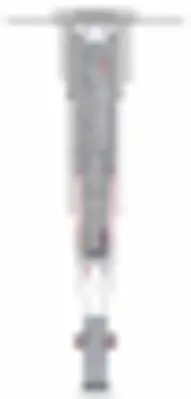
In the fourth and final stage, the tree was removed, and the tubing and wellhead were cut using a thermal cutter at the surface. The remaining void, from tubing to the annulus side, was pumped with cement using a cement unit with a PVC pipe. After the abandonment the barriers in place included cement across the Amin formation, 15K copperhead bridge plug across the packer depth covering the shallowest reservoir, cement in A-annulus from packer to surface, cement in B-annulus from 13 3/8” shoe to surface, and cement in 4 ½” by 5 ½” tubing from the copperhead bridge plug to the surface.
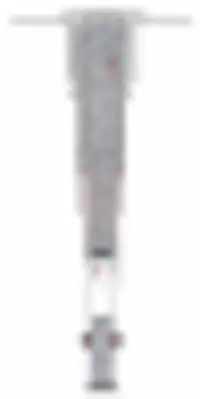
This was a non-standard operation for the company, and they therefore had some challenges. These included:
• An inability to establish circulation through tubing post tubing punch as the punch tool was not fit for purpose. To remedy that in the future they would select a perforation gun instead.
• Longer WOC duration as the shallowest section BHST was not incorporated into the lab test. In the future the company would therefore ensure lab tests would be performed in a more representative environment and the cement recipe would be optimised.
• Incorrect pumped cement volume due to on site pre-job recalculation using incorrect capacities. This could be avoided in the future by ensuring all changes to the programme are managed by MOC process.
• Inability to cut the tubing due to an inadequate gas weld cutter. The lesson learned from this was to use the plasma cutter for tubing cut.
“Despite the challenges, we delivered the abandonment job with an extra one day than planned but with a 27% less cost than initially expected. For individual service lines we had well testing delivered at about 90% of the planned cost at eight instead of ten days duration; slickline was conducted at the right cost but took an extra half day; coiled tubing was delivered at 65% the planned cost and ran for three and half days instead of five; cementing was completed at about 60% of the projected cost at approximately the same amount of time; and tree removal took the same amount of time as expected,” Al Abri concluded.
“The only service line that we exceeded the planned cost and duration was E-Line and that is attributed to the NPTs mentioned earlier where extra runs were required.”
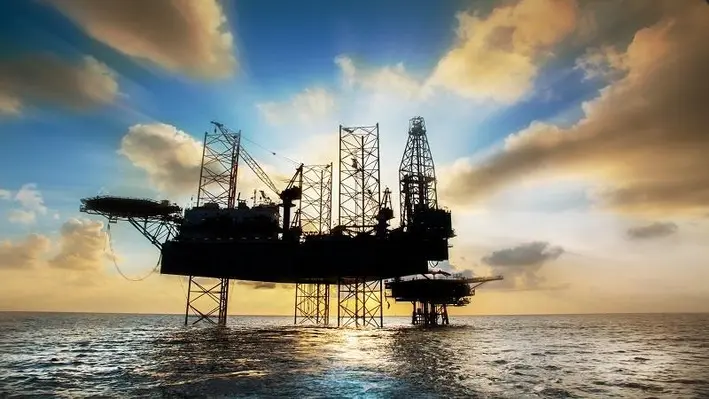

At the Offshore Well Intervention Middle East 2022 conference, Mustafa Adel Amer, Senior Petroleum Production Technology Engineer and Well Integrity Management at BAPETCO, guided the audience through an expert case study focused on well production and methane abatement.
Adel Amer began by explaining the latest goals set out to reduce methane emissions whereby, at COP26, more than 100 countries signed the global methane pledge to cut methane emissions by 30% by 2030. Methane emissions are now at the centre of climate discussions and the abatement of them is, and will become, key to the competiveness of fossil fuels in the future.
The upstream sector, Adel Amer continued, is assumed to contribute around 80% of the methane emissions in the industry, with the majority of this coming from venting operations. Given the global desire to abate methane emissions, it is therefore of paramount importance for operators to reduce this without affecting production rates.
In pursuit of this, Adel Amer presented a case study from his company which focused on treating liquid loaded gas wells in a method that reduced methane emissions and saved significant money.
Adel Amer said, “Liquid loading in a gas well is the inability of produced gas to produce the entrain liquids from the wellbore. Over time, gas velocity decreases and liquids in the well will impact the lift performance that reduce or even stop gas production.”
“Turner discovered the liquid loading could be projected by a droplet model illustrating when droplets move up or down depending on the velocity relative to a critical velocity.”
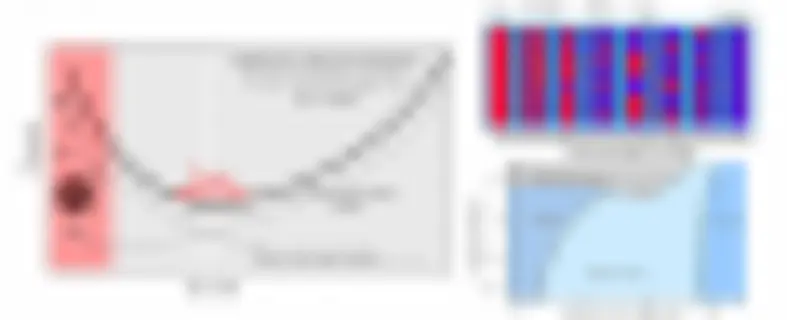
Adel Amer explained that is common to use VLP to diagnose liquid loading where, in practice, critical velocity is generally defined as the minimum gas velocity in the produced tubing required to produce with low probability of liquid loading risk.
“With the Turner approach, the droplets accumulate in the large ID section but bubble flow takes place at the very low gas flow rate, you need very low gas rate usually at the far left end of the VLP curve. In many cases you don’t see the size of liquid columns that you would expect to balance the drawdown when the well is shut in for cycles.”
Mustafa, in his presentation, presented technical analysis showed that wells that operate in their unstable, hydrostatic dominated, part of their VLP suffer from increased liquid holdup along the entire well.
“We therefore need to focus on increasing velocity across the entire well,” Adel Amer remarked.
In order to do so BAPETCO showed a solution performed on an old well located in an onshore gas field with over 10 wells suffering from liquid loading and run under manual unloading cycles. The well chosen was an old one, beyond 17 years of operation, which had a five inch completion. The task was to end the cyclic behaviour of wells to increase production and eliminate methane emissions.
Considering the context of the field and the company in terms of near wellbore damage after well killing and the well integrity manual that mandate having operable sub-surface safety value in all gas wells, the best solution as Adel Amer said, “was to run a velocity string without killing the well while maintaining the sub-surface safety valve operable and without reliance on a snubbing unit.”

They began by conducting surveillance to select the best candidate wells through in-house developed python code that analyse reservoir data, production data, well history, and well integrity history to gain insightful analytics of the well integrity failure history, potential gain, clearance of the well etc. They then selected candidates and examined the potential in terms of possibility of success and expected gain.
Once done, they went to the PIPESIM to model the surface network and make sure production gains coming from fixing the intermittency of the gas wells would not be constrained by network capacity or connection with other high pressure wells in the network.
The modelling results indicated that inserting 2 7/8 inch completions reduced the risk of liquid loading over the completion string and maintained liquid loading velocity ration favorable for stable gas production.
In practice, to run the velocity string without killing the well, without snubbing units and while having operable sub-surface safety valve, the operating included:
• Rigless inspection of the existing five inch completion and settling an isolation packer with surge disk.
• Workover to run the 2 7/8 inch and set an upper packer below the sub-surface safety valve.
• Rigless coiled tubing to unload the brine and break the surge disk.
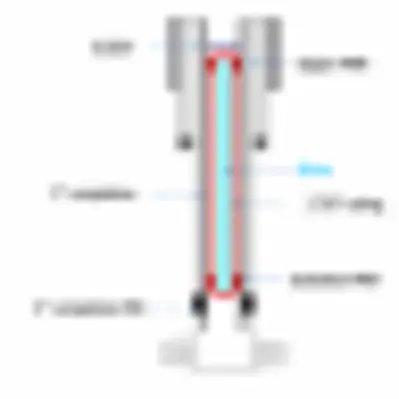
Adel Amer said, “This was completed successfully and the project converted the well from one with a fluctuation intermittent behaviour to a more stable state. The stability of production increased to 2.5MMSCF/D after applying the velocity string, up from a 1.5MMSCF/D the day before the project.”
The project helps to achieve various positive results including:
• Cost reduction: the cost of using workover rig to run the 2 7/8 inch tubing inside the existing 5 inch completion was only 10% of a snubbing unit with payback time of 5-6 weeks.
• Increased the gas production rate by 1.5 times and condensate production by 3.8 times.
• The monthly reduced GHG emissions per well is equivalent to 4.4mn miles of passenger vehicle emissions.
• Reduced workload on production operations from elimination of manual unloading.
• Maintained compliance with well integrity standards.

Abel Amer concluded, “We now have a new way of dealing with intermittent gas wells which is less expensive, does not kill the reservoir and maintains an operable sub-surface safety valve. Even though liquid loading is a dynamic process, using PIPESIM provided very useful clue to estimate the liquid loading velocity ratio which was among the main design parameters.”
Abel Amer can be contacted through his LinkedIn profile here.
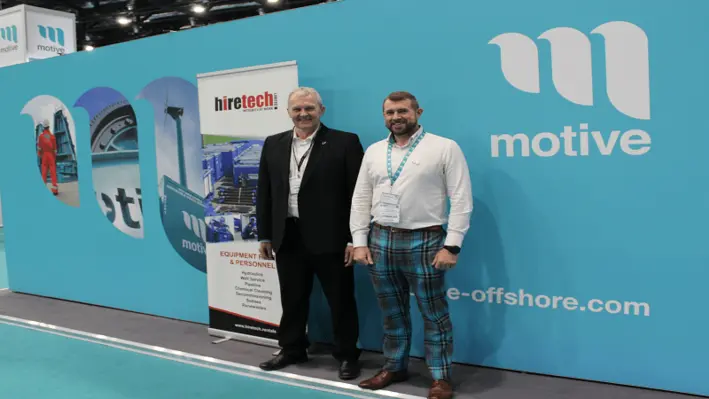

Marine and lifting equipment specialists Motive Offshore Group (Motive) and subsea and decommissioning equipment rental specialists Hiretech Limited (Hiretech) have joined forces to bring superior technology and service solutions to the Middle East.
Motive, with its UAE hub and existing catalogue of subsea marine and lifting equipment services, is bolstering its current suite with Hiretech’s extensive rental fleet of decommissioning and subsea technology, bringing much-needed consolidation and in-market offshore services support for the region.
Graeme Chalmers, Regional Manager Middle East at Motive Offshore Group, commented, “Having worked with Hiretech for many years, we’re thrilled to formalise our partnership. Harnessing our skills and insights, developed in-step with Scotland’s trailblazing strides in the oil & gas and offshore wind markets, we understand the importance of market consolidation when it comes to keeping costs low and are looking forward to offering greater levels of support from our Middle East base.
“2022 is a big year for Motive. This partnership marks the next stage of our journey, and we are looking forward to continuing to expand our global footprint through increasing sales by 15% in this key region.”
Along with the technology and equipment, Hiretech will also deliver a comprehensive training programme to Motive’s engineers and technicians, enabling seamless delivery of products and technical support.
Andy Buchan, CEO, Hiretech Limited, remarked, “Hiretech has historically served the Middle East region from the UK. This new Middle East partnership puts our equipment in country, significantly reducing mobilisation times and costs for our Middle Eastern clients, with the additional advantages of utilising the extensive commercial, logistical, technical and equipment support available from the Motive FZE team.”
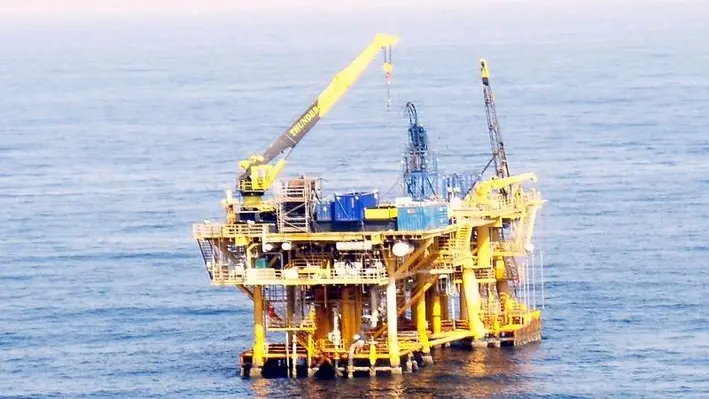

In a unique case study, Thunder Cranes has explained how it provided lifting support for coiled tubing operations in offshore Dubai, UAE, with cranes designed for portable use and ease of assembly & disassembly on offshore installations.
During planning for the coiled tubing operations it was determined that there was insufficient space to accommodate all of the coiled tubing equipment on the platform deck that was located directly over the wells identified for intervention.
As a result Thunder Cranes needed to make use of an adjacent platform, located 50 feet away, and so the company designed a lifting plan using two cranes and both platforms to carry out the lifting support required for the project.
For the purposes of the case study, they were named "Platform A" and "Platform B" and the company provided a summary of the steps carried out:
• Using the existing platform jib crane Thunder Cranes lifted the component parts of the 20 ton crane (TC20) from supply vessel to Platform A.
• Once TC20 was rigged up and load tested it then lifted the component parts of the 90 ton crane (TC90) from supply vessel to Platform A.
• After the TC90 was rigged up it rigged down the TC20 and lifted all of the TC20 components from Platform A to Platform B.
• TC20 was then rigged up on Platform B.
• TC90 was able to pick up the coiled tubing reel, with a long enough boom to be able to hook to the coiled tubing pipe and pull it over from one platform to another to be run through the injector.
• Over on platform A, working in tandem with the TC90, the TC20 lifted, rigged up, and helped support the coiled tubing injector.
In the case, the company rigged up and load tested two days within seven days thank to the TC clamping method, the modular design of the cranes, and the highly experienced staff.
In the project, TC20 and TC90 cranes enabled the coiled tubing work to begin ahead of schedule and was a safe & cost effective solution compared to alternative methods.
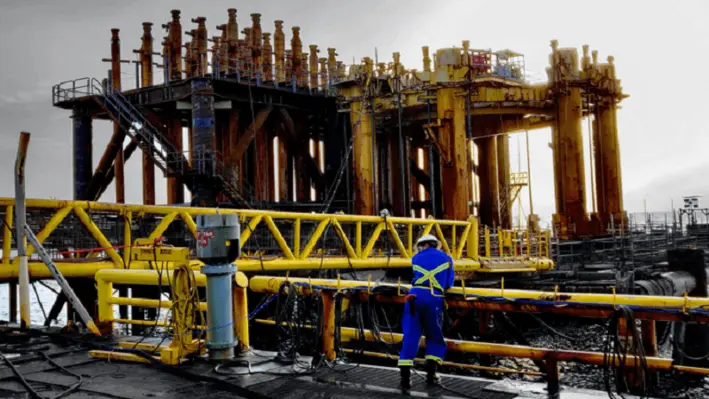

Claxton, the lead brand of Acteon’s drilling and decommissioning segment, is set to acquire decommissioning personnel and assets from Oceaneering.
The agreement was signed recently with the anticipated closure date of 30 March, 2022. Certain staff in Norway will transfer to Claxton, along with decommissioning assets, including well and pile abrasive cutting and recovery systems and associated tooling. Also included in the deal are conductor drilling, pinning and cutting systems, diamond wires saws, dredges and various ancillary equipment items. This equipment will initially be deployed from Acteon’s bases in Norway, Dubai and Aberdeen.
In addition, Oceaneering is establishing a master services agreement where Claxton will provide services to support the company’s wider scopes. This could potentially include its multi-client Rig Chase decommissioning campaigns.
Sam Hanton, Acteon Drilling and Decommissioning Segment Managing Director, commented, “The deal will increase our capacity, the range of technologies at our disposal and our decommissioning expertise, and reinforce Claxton’s position as one of the leading global suppliers of offshore cutting services.”
Luke Pirie, Director of Offshore Projects Group, Oceaneering, added that the deal allows the company to strategically focus on its integrated solutions offering while ensuring access to decommissioning services through a partnership and the new master services agreement with Claxton.
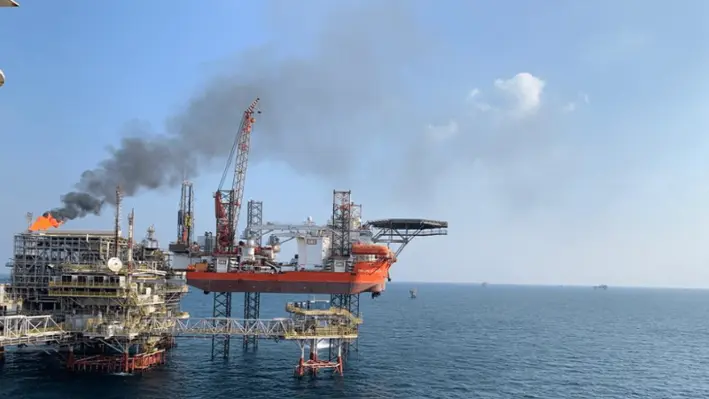

Jordan Whyte, Head of Commercial & Business Development at Gulf Marine Services (GMS), explained to Offshore Network how the company is facilitating more efficient heavy well intervention operations to save time and costs.
In the Middle East, attention is firmly fixed on increasing production. While the energy transition has threatened to shake confidence, key players have reaffirmed their faith in the oil and gas market in the years ahead by looking to increase production – Saudi Arabia’s Aramco has signalled its intention to increase oil production to 13mn bpd (up from 12mn bpd) and ADNOC is aiming to boost capacity to 5mn bpd (up from 4mn bpd).
Within the region, Whyte explained, one of the most favoured ways of increasing production is to workover existing wells using the likes of jack-up barges to re-stimulate wells in shallow waters. It is for this reason that of the 12 barges GMS currently has in the Middle East, around half are presently engaged in some form of well service operations (there is another barge in the North Sea working in renewables).
“Covid-19 dramatically delayed a lot of contracts of course but, subsequently, these have been reactivated. Now it is in overdrive, driven by these production targets and allied to the large population of existing shallow water platforms; the simplest and most efficient ways to reach these is by using jack-up barges. While we are not downhole engineering experts, we are the medium to carry out these operations and currently have high utilisation levels due to the production boom,” Whyte said.
GMS’ Evolving Capacity
Standing apart in GMS’ fleet is the Evolution self-propelled, self-elevating well intervention barge which was commissioned back in 2017. Fitted on board is the bespoke cantilever workover system, delivered in collaboration with Norwegian-based Dwellop.
This unit skids hydraulically from the main deck of the barge out of the back end for the best part of 50 ft; has a light weight drilling derrick that comes complete with top drive system; and has a high level of automation such as a pipe handling system that will pick pipe up off the deck and feed into the top drive before running in hole. There is also an automated iron roughneck on board and everything is run from a driller’s cabin on the side of the unit so that pipe can be tripped in and out of the well at significant speeds (up to 1,000 ft an hour). Below the deck is also a full Mud System with everything normally associated with a drilling rig; enhancing the vessel’s capacity.
Whyte remarked, “In a sense it is very similar to a jack-up rig but it is a hell of a lot lighter and thus can skid out over a platform much faster (typically only 30 minutes). There is some transverse movement which means we can also skid left to right in order to workover adjacent wells without having to necessarily move the barge itself. When we do have to skid back, rig down and move elsewhere, we can typically do so and be ready to work at another location within 24 hours. This is significantly faster than a jack-up rig for example which can take the best part of two to three days and even more if the weather is poor. Not to mention the fact no tug-boats are required to get it to the next location due largely to our clients comfort operating Evolution in DP-2 mode when approaching platforms. As a result, the Evolution can workover up to three or four times as many wells per year compared to a typical non-propelled drilling jack-up in any given field.”
“We are trying to bring down the costs of all brownfield workover operations and the Evolution offers flexibility and cost saving due largely to the superior marine efficiencies.”
The Evolution was purpose built for P&A and workover scopes but can also perform some drilling operations. Whyte noted that it is really only limited by the amount of tubular piping that can be carried on deck (and a few others such as top drive torque capability and hook load) and the 200t crane on board means it even has the ability to remove small jackets although that has not been done to date.
In once case study provided by GMS, the Evolution was contracted by an Arabian Gulf NOC for a well intervention scope covering various operations. The barge jacked up alongside a similar vessel to transfer well services equipment (which was moved across and commissioned in a record two days) before sailing to the platform tower, jacking up and deploying the cantilever system. The unit was ready to commence operations with three hours (saving 90% rig time) and rig up of well services equipment was completed in 31 hours (achieving 15% time saving). Following this, rig down of well services and preparation for the barge to move was completed in just 14 hours.
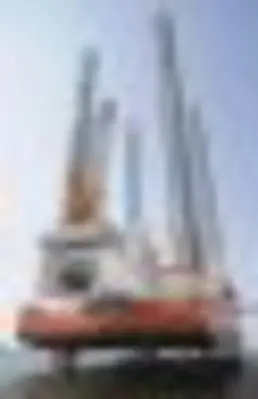
On the Horizon
Currently the Evolution is performing legacy work for Qatar Energy (QE) on a field which was previously operated by Occidental Petroleum for around 25 years. The former owners used a more traditional method of workover which QE continued until GMS suggested that the Evolution would be more efficient. In the 18 months since then, the Evolution has been proving its worth and this is without even reaching its full potential.
“In truth we are not even at the stage where we are using Evolution at 100% of her capability but we are certainly working towards that. As it gets more tried and tested and both the crew and client gains confidence, we will be more prepared to tackle more difficult workovers and remediation projects. But it is fair to say that, so far, it is going well and QE appreciate the marine efficiencies being achieved,” Whyte noted.
Pushing, the Evolution to greater heights is just one of the targets on the horizon for GMS, Whyte continued. The company has recently taken a big step in its digital journey by signing a contract to install an enterprise resource planning system which will provide the company with an interconnected system across its operations, giving it the ability to upgrade internal procedures; integrate vessel operations, maintenance, procurement and inventory control, alongside crew and payroll management; and centralise data for better visibility. Whyte surmised that while it will not be fully up and running for a couple of months yet, the company has already started to feel the benefits (most notably in the real-time communication between offshore and onshore) which is a promising sign for the digital road ahead.
Another exciting development is through the delivery of a lighter cantilever system which the company is looking to push across the line for commercial use. This is, as it says on the tin, a lighter version of the system which can be used for all well services which do not require tubing to be pulled from the well.
Whyte said, “It can skid out just as far and can be retrofitted to existing vessels. There is a lot of interest from NOCs for this and we are looking for more opportunities for the cantilever system and its lighter cousin. As the rig rates continue to rise and move away from barges, we think our offerings will become increasingly more attractive to operators for both heavier and lighter workover operations.”
Finally, Whyte concluded by noting that the company is keeping an eye on other regions for which its fleet could be deployed with regard to well service and workover operations.
“West Africa is finally waking up to well servicededicated barges; in the North Sea there is some increased activity in terms of P&A; and there is interest from regions such as Asia and Australia to bring in some of our barges. The Evolution is capable of operating anywhere with water depth of around 70m and has proved herself in other regions such as the North Sea before,” Whyte continued.
“We put no barriers on where we work as long as the economics work out. That being said, such is the boom and demand here that, at the moment, we are very focused in the Middle East region. The Evolution itself has been working in Qatar for the last two years and fingers crossed we expect her to continue there for some time.”
OWI ME 2022
GMS will be speaking further on this at OWI ME 2022 on the 28-29 March 2022 in Dubai, UAE. Register here or reach out to Rachael Brand on the details below for more information:
Rachael Brand
Project Manager, Offshore Network
t: +44 (0) 20 3409 3041
e:
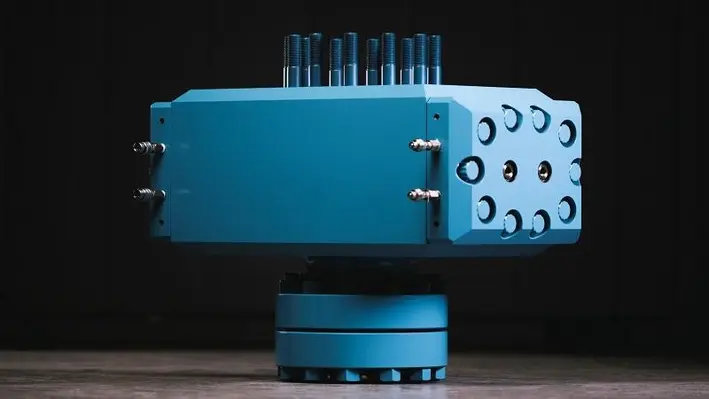

Unity, one of Europe’s largest providers of well integrity solutions, has launched a new range of compact technologies to solve common industry challenges and support Unity’s surface well integrity, shallow intervention and well decommissioning services.
For offshore operations, the new products reduce well bay space requirements, simplify and accelerate offline mobilisation and reduce person on board, cost and risk. Due to these efficiencies, the products all offer between 50-75% savings in OPEX.
The new technology range includes a compact dual-bore xmas tree isolation system, a compact valve removal tool and a compact shear-seal valve. The products complement Unity’s existing Surface Intervention System (SIS), the first product in this compact technology range. It is already delivering multi-functional operations such as inspection, plug setting, milling and xmas tree removal, at reduced cost and improved efficiency compared to wireline or coiled tubing intervention. The SIS is the most compact of its type on the market with a footprint of around 2 sq ft, requiring only two technicians to operate.
The new dual-bore xmas tree isolation system has a footprint of just 1.5 sq ft with an operating height of only 6 ft above the well cap. It can be mobilised and deployed rapidly for shallow plug setting, particularly suited to support and reduce the cost of P&A operations. It can be deployed offline without the need for traditional intervention equipment, saving around 60-75% or more per well. Time savings from rig-up to rig-down are in the order of two to three hours compared to two to three days for wireline or coiled tubing interventions and the system is quickly and easily moved between wells.
The valve removal tool is also designed for use in cramped well bays and delivers an impressive, industry leading, 1,200 ft/lbs torque with optional hydraulic operation without the associated space normally required for such operations. Its rental price is around 60% lesser than similar products.
The new compact shear-seal valve is designed to reduce the weight and geometry of intervention pressure control equipment. It utilises a hydraulically actuated ram but is 50% lighter and 30% smaller than the next closest comparable product. It is rated to cut slickline, wireline, SIS rods and coiled tubing and is modular in design, allowing dual redundant stack-up configurations. Its compact size and reduced weight improve handling and help to reduce concerns over structural integrity on late-life assets.
Gary Smart, CEO at Unity said, “Unity is engaged in long term contract work on over 1,000 wells around Europe, the Middle East and Africa. Our investment in this new compact technology range has followed on the back of significant contract wins over the last 18 months, which have highlighted several common technical challenges faced by the industry, particularly in the late-life, P&A and well decommissioning market. We are very excited to be offering such an impressive step-change in savings and technical advancement to the market.”
D&A GOM 2022
Innovative technology for decommissioning and related operations will soon be on display at D&A GOM 2022, arriving in Houston, Texas, on 18 May. At this event, the offshore community is set to reunite face-to-face to discuss the challenges and opportunities marking decommissioning and abandonment in the region, listen to sessions delving into current complex situations and network to help each other optimise their strategies. To find out more, download the brochure: www.offsnet.com/da-gom/conference-brochure
Or contact:
Joseph Watson
Project Manager
Offshore Network Ltd.
t: +44 (0) 20 3409 5720
e:
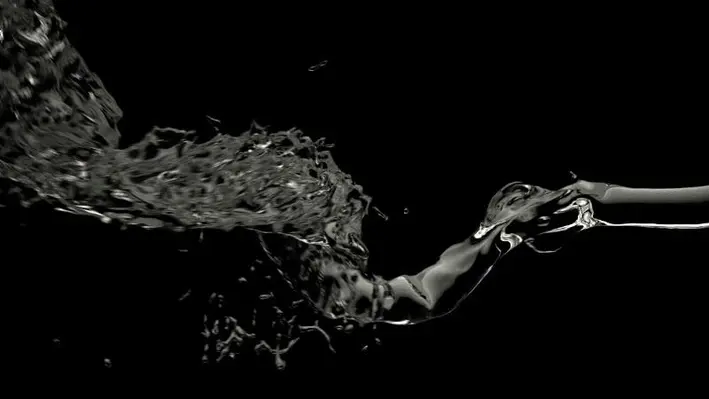

TGT Diagnostics, which deals with through-barrier diagnostics for the oilfield, has announced the launch of ‘Horizontal Flow’ diagnostics with Cascade3 technology.
This new system, specifically designed for horizontal wells, provides asset teams with more realistic flow modelling and precise continuous flow profiles in a wide variety of completion and reservoir settings, including fractured formations.
Horizontal Flow diagnostics, supported by the all-new Cascade3 flow analysis platform, is a purpose-built system incorporating the industry’s most advanced thermodynamic and hydrodynamic modelling codes to transform temperature and other well system data into continuous reservoir flow profiles. Essentially, these flow profiles reflect flow both in and out of the reservoir and thus deliver the most accurate and detailed picture of well – reservoir flow behaviour.
Mohammed Hegazi, TGT’s Chief Executive Officer, while speaking about the technology, said, “Understanding the flow dynamics in a well system is the solution for better well and reservoir performance. This is especially true for horizontal wells where fluid flow can be incredibly complex. Horizontal Flow is the most powerful flow analysis product ever created for horizontal well systems. It overcomes many of the challenges faced with conventional production logs and enables operators to maximise hydrocarbon recovery while operating in the safest, cleanest and most economical way possible.”
Ken Feather, TGT’s Chief Marketing Officer, explained that improved understanding provides a much-needed opportunity to optimise performance. “The transition towards cleaner energy and declining opportunities for new field developments means that operators are shifting investments towards recovering more from existing assets. Horizontal wells promise enormous efficiency and economic gains but are notoriously challenging to manage. Horizontal Flow with Cascade3 solves many of the diagnostic challenges faced by Reservoir and Production Engineers, providing them with the insights they need to reduce operating costs and energy consumption, and increase ultimate recovery.”
The complete and accurate downhole assessment Horizontal Flow with Cascade3 offers means that diagnostic deployments can provide a wealth of information from a single programme, thereby reducing uncertainty and avoiding the need for subsequent deployments. Yulia Fesina, Cascade project manager, said “The Cascade3 workflow can also be used to estimate or validate other key parameters that reservoir and production engineers may find extremely valuable, including reservoir pressure, permeability and skin factor. This independent verification of key parameters can help reservoir engineers to resolve uncertainties and improve history matching and dynamic reservoir models.”
Horizontal Flow diagnostics are now available to upstream operators through TGT’s comprehensive range of True Flow answer products.
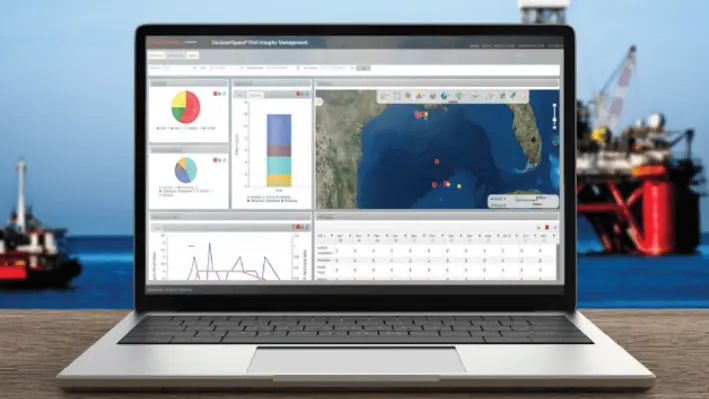

With more and more producing fields showing late life symptoms like aging well stocks and high water cut, which can lead to well integrity issues, Hemant Kumar, Technical Advisor for Production at Halliburton, explained why well integrity management is becoming more important than ever.
Many gas fields report high CO2 and H2S content which can be challenges for pipe metallurgy and reliability. Faced with increasingly stringent regulations, a shrinking experienced workforce, and the need to control costs, E&P operators are getting serious about well integrity management (WIM).
Path to better well integrity management performance
DecisionSpace Well Integrity Management software is designed to help minimise risks and associated production losses by streamlining well integrity monitoring and analysis. With automated and integrated workflows, it delivers rapid diagnosis of well barrier elements to spot well integrity risks faster and execute preventive and remedial maintenance in time. It helps end users in rapidly identifying high-risk wells, taking corrective actions faster, and mitigating issues to maximise well availability.
Integration with WELLCAT software gives DecisionSpace Well Integrity Management software a better ability to detect the down hole integrity risks early on and help prevent downtime or environmental hazards. “Over 80% of the operators globally trust WELLCAT for its advanced engineering calculations required for well design,” Kumar added.
Workflows in DecisionSpace Well Integrity Management software automatically fetch engineering calculations to continuously update the Stress and Load envelopes of the tubulars and alert end users if actual operating conditions of the wells trend closer to those envelopes. Kumar said this approach gives end users a better understanding of how changing operating conditions impact the integrity of the wells, which is not always possible with the simple MAASP-based operating envelopes.
Flexibility for customisation
DecisionSpace Well Integrity Management software is built on the E&P industry’s fully open, interoperable DecisionSpace platform which offers E&P companies flexibility for customisation and the ability to create well integrity management solutions tailored to their unique business processes and IT environment.
Any WIM software needs to work in a heterogenous technology environment. It needs to talk to a multitude of data sources and adjust to changing modes of operations or expansion. An inability to adjust adds to architectural complexity and cost of ownership, and E&P companies may need to procure additional technologies to keep up with the growing needs of their business.
The underlying DecisionSpace platform connects with a variety of data sources and accommodates evolving workflows, visualisation, and analytical needs without requiring additional technologies. The platform is the foundation to all Halliburton’s digital offerings and is supported by long-term product roadmaps and R&D investments. With a track record of successful implementations globally, it brings to E&P companies the assurance of referenceable quality and future readiness.
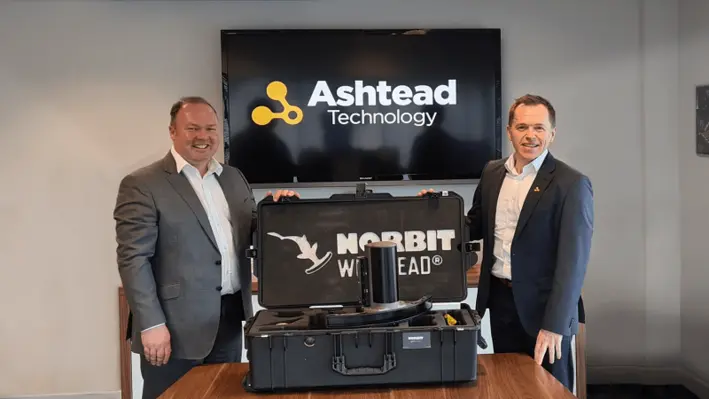

Ashtead Technology, an international subsea rental equipment and solutions specialist, has signed a multi-year agreement with Norway-based NORBIT Subsea, a provider of tailored and innovative technology solutions to the global maritime sector, to serve as its exclusive reseller throughout the Middle East.
NORBIT Subsea specialises in the design and development of high resolution wideband multibeam sonars for hydrographic applications, forward-looking applications and advanced subsea leakage detection. Based on the latest in analogue and digital signal processing, their products provide wide coverage monitoring combined with high sensitivity and accuracy.
David Mair, Ashtead Technology’s Business Development Director, commented, “We are delighted to partner with NORBIT Subsea for the exclusive sale of their multibeam sonar survey systems across the Middle East. These systems are industry-renowned for their exceptional performance, innovation and reliability and are in high demand with our customers.
“The Middle East is a key growth market for Ashtead Technology and we are excited to be able to broaden our product and service offering in the region and accelerate our international growth strategy.”
John Fraser, Director of NORBIT UK, added, “This exclusive agreement reinforces our commitment to the Middle East region and our plans for growth. We know Ashtead Technology very well and are delighted to be working together to continue building momentum for our products in the region.”
Ashtead Technology has also invested in NORBIT Subsea’s ultra-compact wideband multibeam sonars which offer high resolution bathymetry over a wide swath. These products are now available to rent throughout the company’s nine international technology and service hubs.
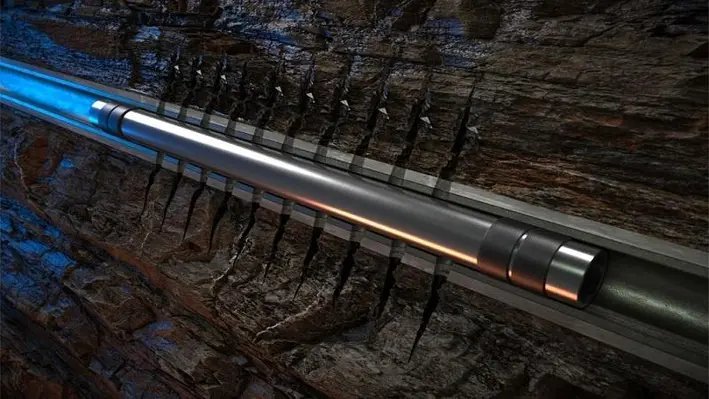

ReLineWL, the expandable technology designed to unlock greater commercial value by maximising production from existing wells, has been successfully deployed in the Middle East for the first time by developers Coretrax.
The global well integrity and production optimisation leader’s ReLineWL is a one-trip, wireline deployed straddle system to address common well integrity issues.
It is proven to deliver a 700% greater flow area when compared to traditional straddles, securing safety and sustainability benefits by reducing the number of onsite personnel required to complete the work.
Introduced in the Middle East for the first time, ReLineWL was deployed to support a major Saudi operator when water ingress on a producing well led to decreased oil recovery. Two ReLineWL 28ft straddles were deployed on e-line, enabling the operator to isolate several perforation intervals to shut off water production zones.
Compared to traditional tools, the ReLineWL’s outer diameter (OD) allowed the system to pass through restrictions before they were expanded and set at almost 7,000ft. The tool delivered a large post-expansion inner diameter, providing maximum production conduit to surface over conventional options.
The well was successfully brought back online with a 31% reduction in water production and additional oil production of 1,400bbls/day. With the requirement for surface water management also reduced the application also significantly reduced the operator’s carbon footprint.
John Fraser, Chief Executive Officer of Coretrax, commented, “The Middle East is a key growth area for Coretrax and the first deployment of our ReLineWL in the region is a significant milestone for the business as we continue to enhance our technology portfolio to support the most complex well integrity challenges. As operators remain focused on maximising recovery efficiently and sustainably, our expandable technology is ideally placed to support this demand.”
Available in various CRA materials, the tool can be configured to smart completion products such as autonomous inflow devices (AICDs) to enhance production by selectively eliminating gas and water production and provide a comprehensive workover solution.
The RelineWL has a high expansion ratio of 75% and is designed for stackability creating a longer, integrated straddle to be deployed, without losing ID. This also allows operators to gain access below if well intervention is required at a later date.
“The ReLineWL already has a proven track record in North America and I’m excited to see this successfully deployed in the Middle East for the first time. As we head into 2022, we already have a healthy pipeline of projects in the region and look forward to working closely with our customers to transform current well performance and deliver greater operational efficiencies,” Fraser continued.
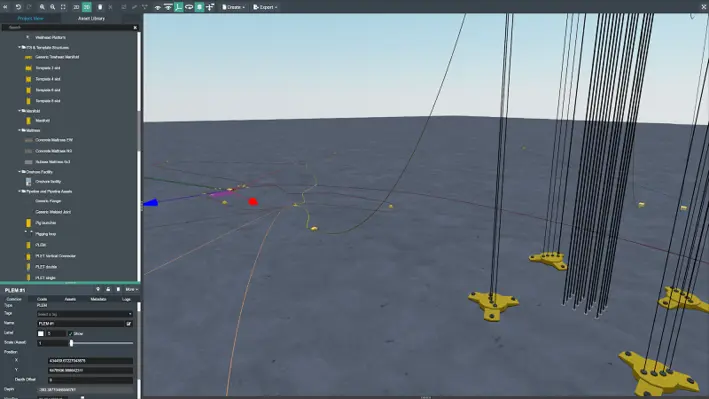

FutureOn, a global software company specialising in the energy sector, has formed a strategic collaboration with Wood, a global consulting and engineering leader, to provide an enhanced service to its client base of global asset operators.
Wood’s expert technical services specialising in the early field development studies for subsea and ocean-based energy systems, will integrate with FutureOn’s unique field design applications, and proven API-centric collaboration platforms, resulting in significant efficiency gains across the design phase.
Having previously trialled FutureOn’s technology in 2019, the latest agreement will see Wood provide technical and integration services to operators using FutureOn’s software. In addition, the company will offer the software as part of its suite of technical services to new and existing customers across the world.
FutureOn’s open and collaborative approach to field design is based on data-rich 2D and 3D visualisations. The inclusion of metadata on assets and costs will enable reliable early-stage production and financial forecasts. It also provides a real-time visual blueprint of a field development allowing project teams and contractors to collaborate remotely, development of options at pace and a shared project workspace for timely delivery.
Wood and FutureOn are committed to supporting the world’s major asset operators’ efforts to build a sustainable economic recovery from their existing infrastructure, optimising asset performance and extending productive field life whilst accelerating the move towards net-zero. The agreement will support these initiatives by combining the power of FutureOn’s FieldTwin technology for the streamlined design of renewable energy systems with Wood’s Automated Design product for pipeline systems that address key aspects of the global net-zero challenge.
“FutureOn is one of the best software solutions companies in the energy sector, and we are delighted to collaborate and serve the dynamic needs of our global client base. Asset operators everywhere are recognising the need to completely transform their existing infrastructure as part of the shift towards a net-zero future. Together, Wood and FutureOn will harness its collective expertise to help them make it happen,” commented Matt Kirk, Senior Vice President, Specialist Engineering and Consulting at Wood.
Darrell Knight, Executive Vice President of Strategy and Partnerships, added, “The collaboration is the perfect fit as we place the same importance on bringing innovation to the fore to solve the most critical challenges, including the improved communication and increased collaboration necessary to achieve the shortest possible path to energy generation, the best returns over the life of any asset, and minimising the impact on the environment. We’re looking forward to building on this collaboration, and bringing this new, integrated solution to our customers to support their goals.”
Page 8 of 12
Copyright © 2025 Offshore Network